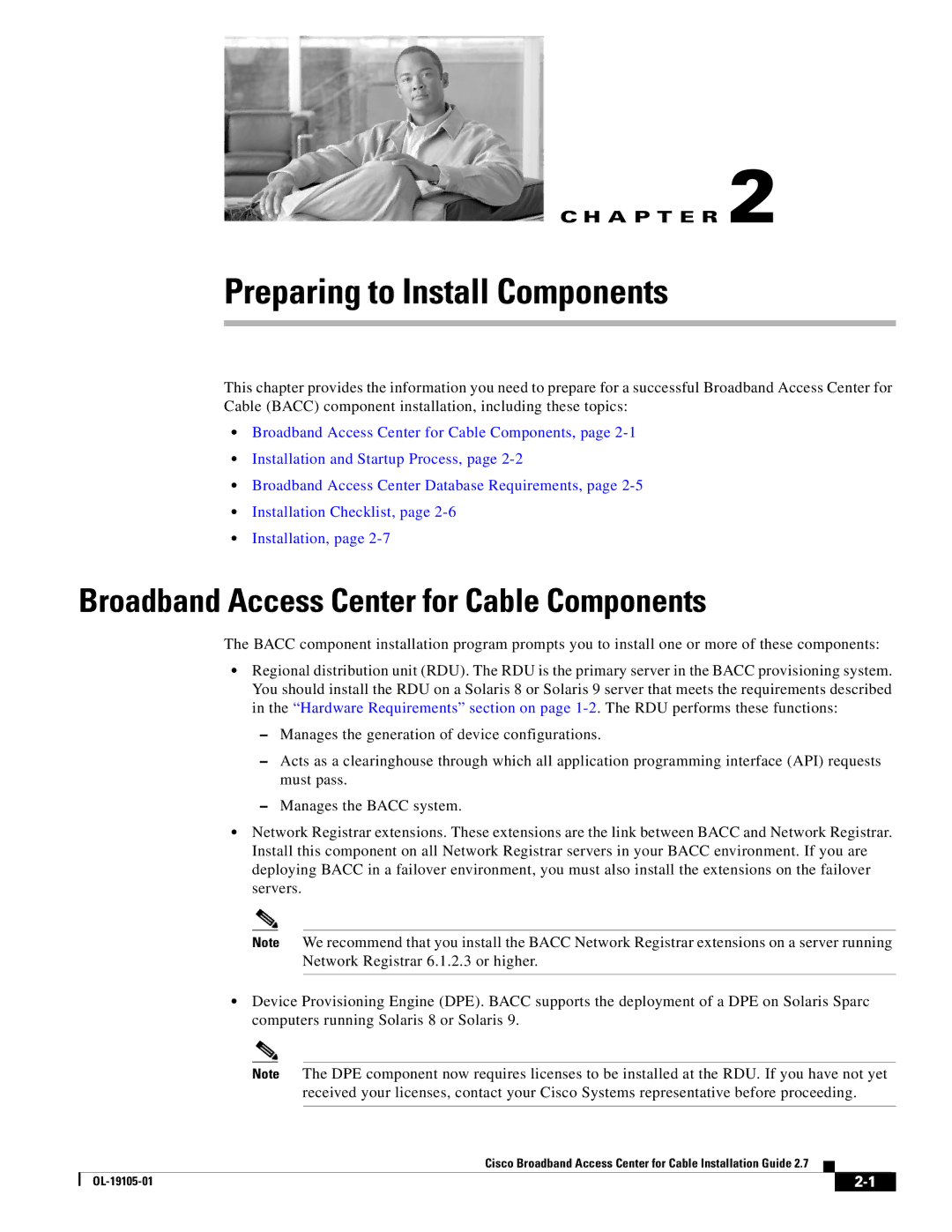
C H A P T E R 2
Preparing to Install Components
This chapter provides the information you need to prepare for a successful Broadband Access Center for Cable (BACC) component installation, including these topics:
•Broadband Access Center for Cable Components, page
•Installation and Startup Process, page
•Broadband Access Center Database Requirements, page
•Installation Checklist, page
•Installation, page
Broadband Access Center for Cable Components
The BACC component installation program prompts you to install one or more of these components:
•Regional distribution unit (RDU). The RDU is the primary server in the BACC provisioning system. You should install the RDU on a Solaris 8 or Solaris 9 server that meets the requirements described in the “Hardware Requirements” section on page
–Manages the generation of device configurations.
–Acts as a clearinghouse through which all application programming interface (API) requests must pass.
–Manages the BACC system.
•Network Registrar extensions. These extensions are the link between BACC and Network Registrar. Install this component on all Network Registrar servers in your BACC environment. If you are deploying BACC in a failover environment, you must also install the extensions on the failover servers.
Note We recommend that you install the BACC Network Registrar extensions on a server running Network Registrar 6.1.2.3 or higher.
•Device Provisioning Engine (DPE). BACC supports the deployment of a DPE on Solaris Sparc computers running Solaris 8 or Solaris 9.
Note The DPE component now requires licenses to be installed at the RDU. If you have not yet received your licenses, contact your Cisco Systems representative before proceeding.
Cisco Broadband Access Center for Cable Installation Guide 2.7
|
| ||
|
|
